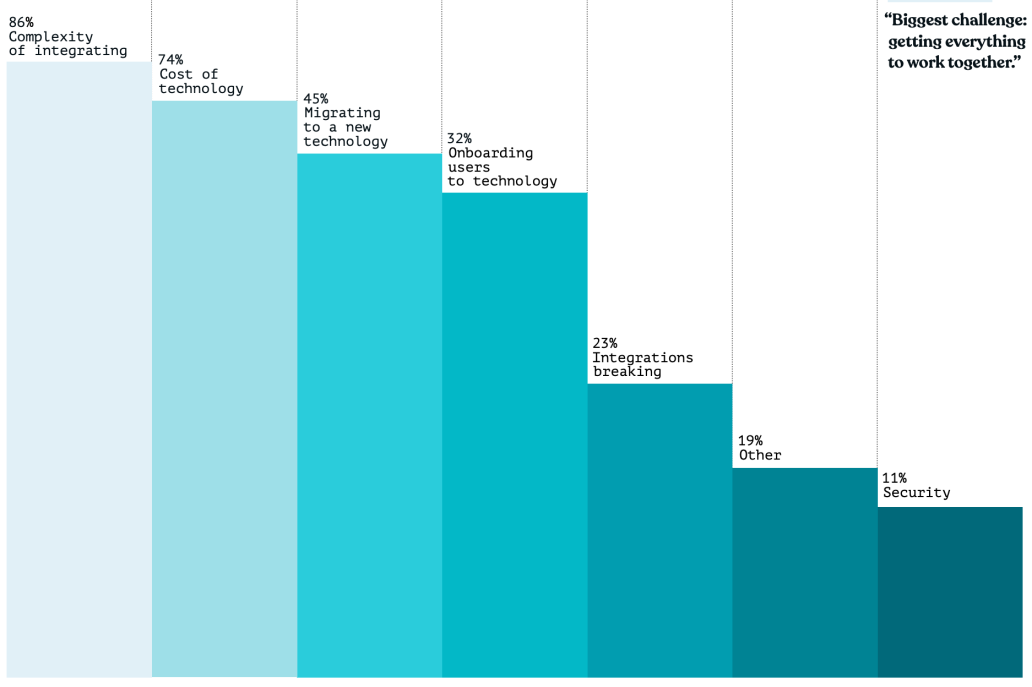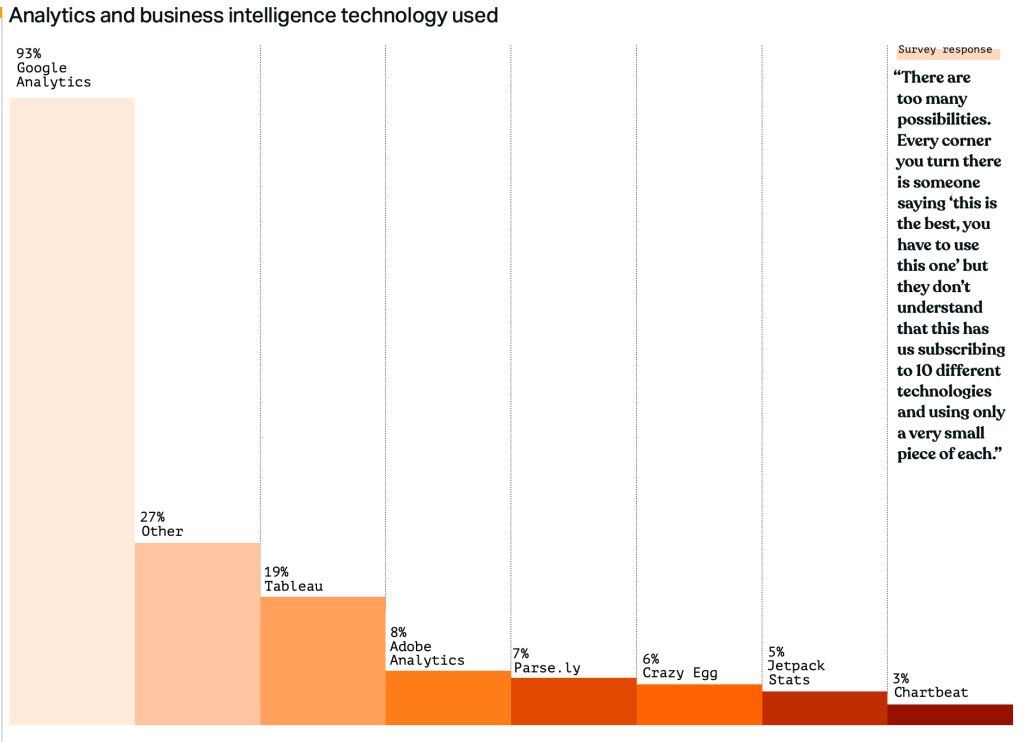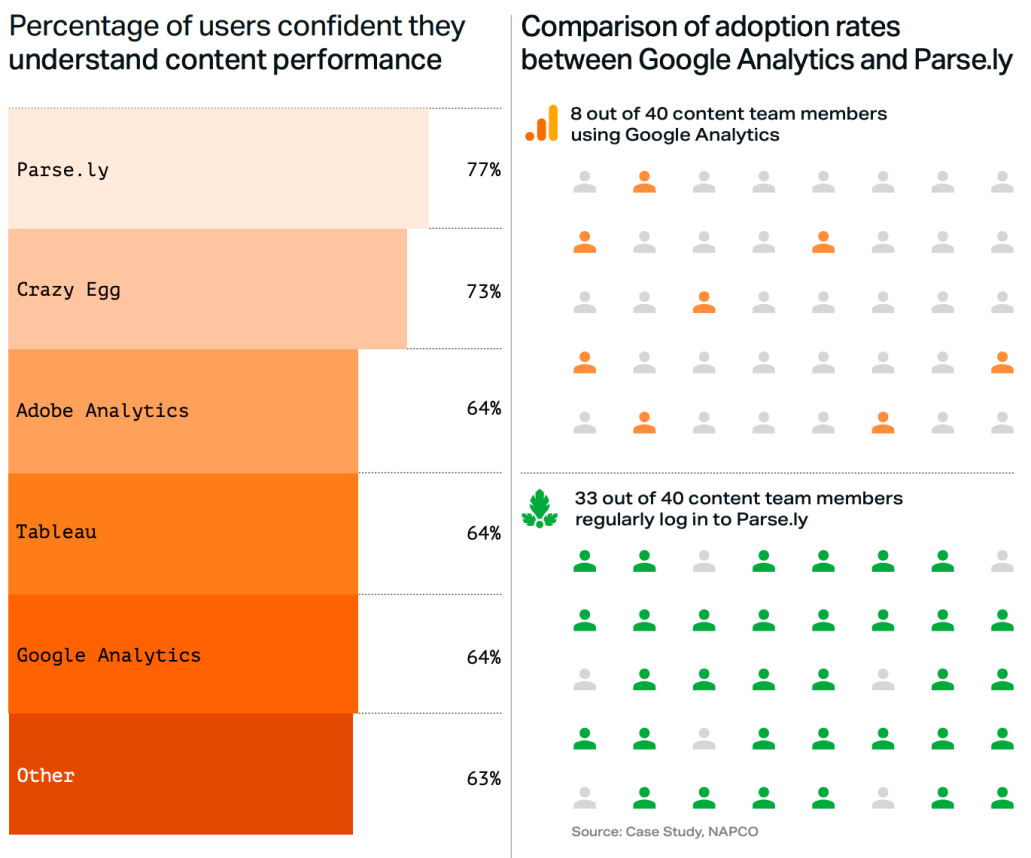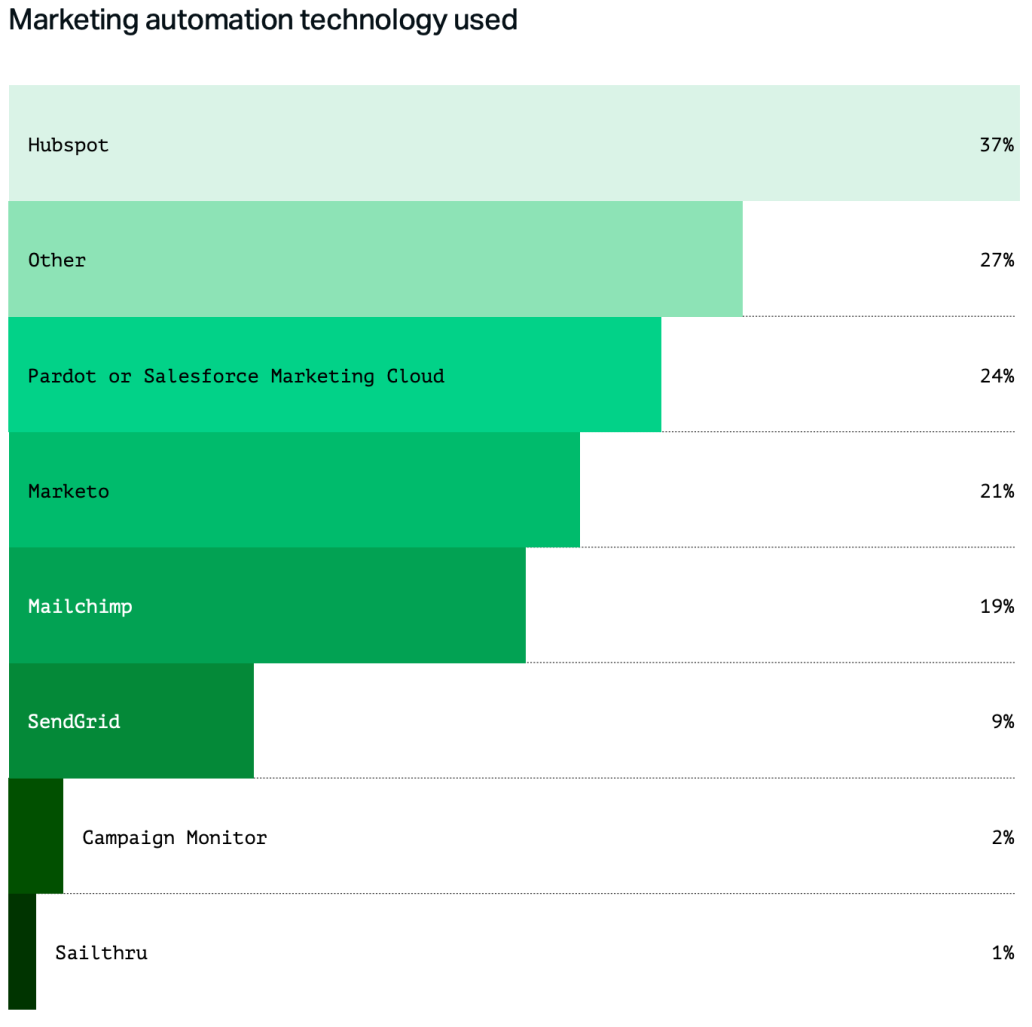Content Matters 2022 Martech Report
When content matters, you need the right tools for the job.
As we uncovered in our Content Matters 2022 Report, modern companies are creating more content, with more creators—and higher budgets—than ever.
With all this new content comes an increased emphasis on the technology that manages, promotes, analyzes, and optimizes that content. But the marketing technology landscape is vast, and difficult to navigate for companies focused on making more content, faster and smarter.
So, how are marketing organizations building their marketing stack around their core content management system (CMS)? And what challenges are they facing when doing so?
As no single vendor can provide a one-size-fits-all solution, businesses take a more strategic approach: selecting best-in-breed tools that suit the needs of their unique business, and seamlessly integrate together. This composable martech stack allows content teams to customize the exceptional customer experiences that will drive growth.
For our Martech Trends 2022 Report, we surveyed more than 800 respondents to discover what they were prioritizing, what tech they were using, and how it’s going for them.
Key takeaways from the report:
- 89% of organizations integrate other marketing technology with their CMS.
- Analytics and business intelligence (BI) is mission-critical to media and non-media industries alike.
- More than a third who use the top cited analytics tools are unclear how their content is performing.
- Seamless tools integration tops business concerns, exceeding even cost.
Read on for more findings to see how your organization stacks up and how you can make better decisions about your choice of martech tools and solutions.

Alex Dunner Head of Marketing Operations, WordPress VIP
Analytics leads the martech stack pack
There’s no shortage of martech tools available to support content efforts. And it’s rare for a company to have no form of marketing technology beyond their CMS. But what type of technology are these companies prioritizing? And how are they deciding which tool is the best fit?
According to our research, 89% of organizations augment their CMS with other marketing technology. These tech tools are broken into five broad categories: 1) analytics and BI, 2) marketing automation, 3) personalization, 4) digital asset management (DAM), and 5) multivariate testing.
A key priority for businesses is to understand the performance of their content. Almost nine in 10 respondents (86%) use some kind of analytics or BI tool, with marketing automation a close second at 74%.
Clearly, everyone relies on analytics. But the popularity of other content martech differs between media and other industries. Media companies already deliver a huge amount of content, so their imperative is to personalize content delivery to suit individual visitors. For companies in other industries, the volume of content is lower. There, the imperative is to drive traffic through other channels, using marketing automation tools.
Type of Technology Used

Type of technology used by companies doing content marketing
Type of technology used by media organizations
Integration pain points
Marketing’s future may be a composable martech stack that seamlessly integrates, but our respondents aren’t finding reality matching up to that vision. In fact, the number one technology challenge is the complexity of integrating their systems.
Even though the cost of technology is an ongoing concern for budget-conscious organizations, surprisingly, it placed second on the pain scale. Because companies are always looking to save money, this highlights the ongoing challenge integration poses in delivering an effective customer experience.

Popular analytics tools
Almost nine in 10 (86%) organizations use tools that help them get smarter about the impact of their content. Google Analytics is by far the most popular software, used by 93% of companies employing analytics and BI technologies.
Both Google Analytics and Parse.ly (part of the WordPress VIP platform), for example, source the metrics most used by content teams: page views, conversions, engaged time, and so on. The difference for the organization comes in accessibility. Is it easy and intuitive to get these metrics, or difficult and confusing?

Most analytics tools can provide answers. But only some make it easy.
It’s frequently reported that users are intimidated by the amount of training needed to learn Google Analytics, and the time needed to find the insights they’re after. In fact, a Parse.ly case study with NAPCO Media showed that only eight out of 40 (18%) content employees regularly used Google Analytics. When they adopted Parse.ly, the usage of analytics rose to 33 out of 40 (84%).
Data in our Martech Trends survey shows that 64% of Google Analytics users believe they have clarity into content performance vs. 77% for Parse.ly users. This is a fairly narrow gap, indicating analytics tools across the spectrum can provide the answers that trained users are looking for. Thus, evaluators at businesses should look closely into how much time and commitment team members need to become competent with their analytics tool of choice.

Marketing automation activates content across channels
Overall, seven in 10 (74%) businesses using content to drive growth employ marketing automation; however, this software category is much more popular among content marketers in non-media businesses, with 61% using it, versus 33% of media.
Marketing automation isn’t new martech. But it experienced a resurgence once businesses started employing CMSes, social media, and ecommerce to build their digital presence. Along the way, it evolved beyond email marketing to encompass ad management, landing pages, social media, live chat, and more. For companies using content to drive business growth, these tools became essential.
In our research, Hubspot emerged as the most popular software choice in this category, with nearly four in 10 (37%) of marketing automation users employing it. However, unlike the analytics category, there was no clear, universally adopted technology vendor.
More than a decade after its inception, marketing automation remains a highly fragmented market, leaving companies scrambling to find real solutions. This is part of why best-of-breed martech approaches are so appealing to many companies.

Personalization, DAM, and Multivariate testing: A mixed martech bag
Personalization, DAM, and multivariate testing technologies are newer than marketing automation, and have been slower to take off. Accordingly, our survey shows a much lower percentage of respondents using them.
Almost half (45%) of all survey respondents use personalization technology, with six in 10 (59%) employing a different tool than the options offered in the survey— perhaps custom or manual. Adoption was highest among media companies.
Despite lots of promise, DAM penetration remains low. A third (32%) of survey respondents use technology to manage their digital assets. Of these, half are WordPress users leveraging the built-in asset management tool, the WordPress Media Library. Half of those WordPress users augment the media library with another technology.
Just two in 10 (23%) respondents use software for A/B or multivariate testing. Google Optimize emerged as the frontrunner of named technologies, slightly trailing custom, bespoke, or manual solutions.
“I need someone to pick one or two technologies that integrate with our CRM and get rid of the rest . . . and show me how to use them seamlessly”
– Survey response
Personalization technology used
multivariate technology used
Digital asset management (dam) technology used
When content matters, you need the right tools for the job
Our goal with this survey and report was to understand which integrated technologies organizations are using in their content stack.
To understand the landscape, we sent out digital surveys, designed and built on the Crowdsignal platform, in November 2021. We asked a series of content-focused questions related to marketing activities and budgets, marketing technology, distribution channels, metrics, and revenue. For this Martech Trends 2022 Report, we referred to the questions specific to integrated technology. Our take on the rest of the findings can be found in our Content Matters 2022 Report.
There were 832 unique survey respondents across various roles, industries, company types, and geographic location. Of these respondents, 76% were from companies doing content marketing, 14% from media organizations (where content is the product), and 11% from companies who are either not doing content marketing or are unsure. B2B technology companies (27%) were by far the most well-represented, with seven in 10 survey respondents indicating they work in the US.